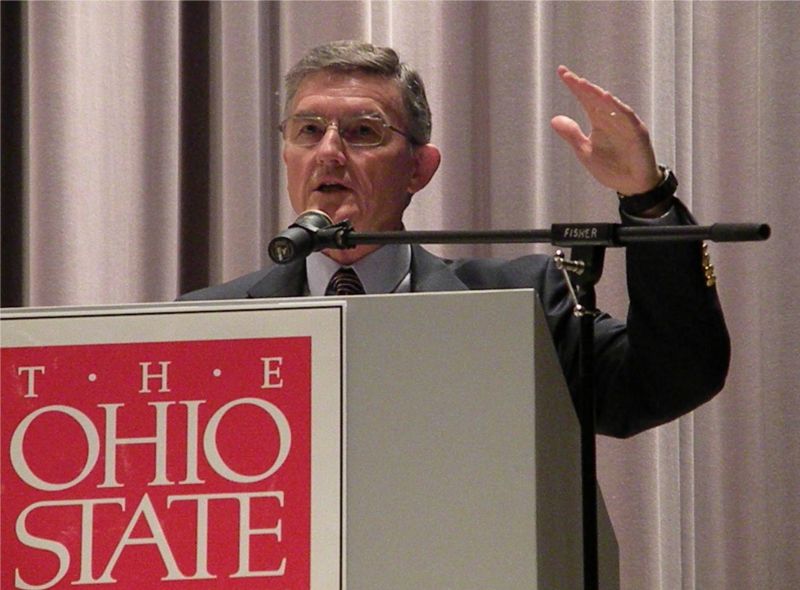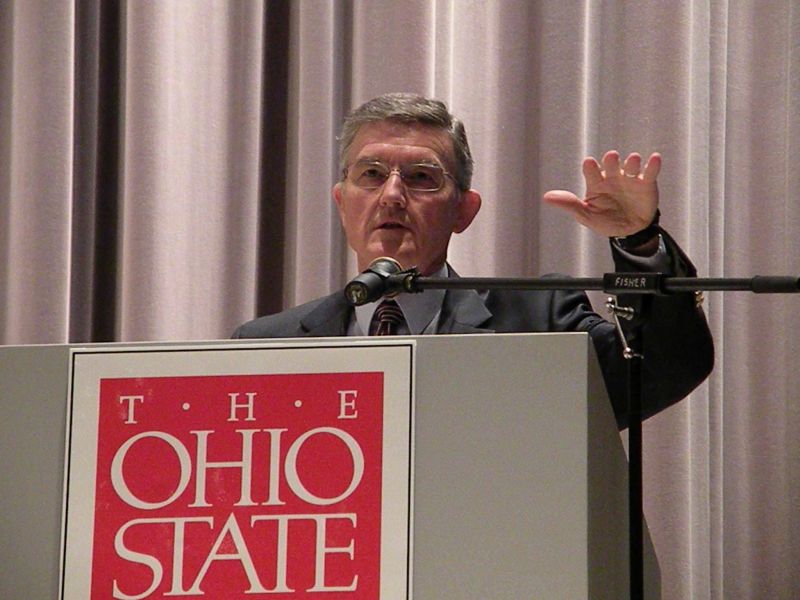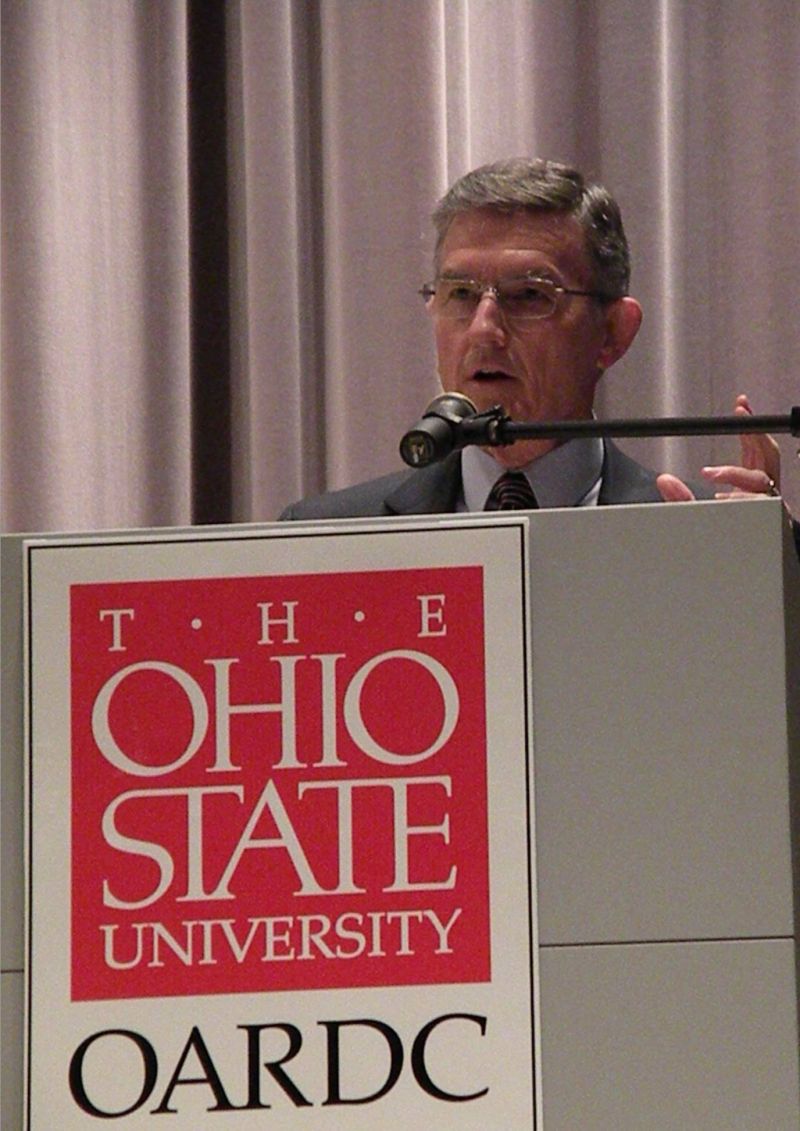050211 OSU showcases sustainability commitment
Summary: As Earth Day approached, the Dean of Ohio State Universitys College of Food, Agricultural and Environmental Sciences paused to share the universitys commitment to sustainability.
When the Dean of OSUs College of Food, Agricultural and Environmental Sciences Dr. Bobby Moser took the podium at the Scarlet, Gray and Green Fair on April 19 he shared the universitys vision for a more sustainable future.
According to Moser, OSU President Gordon Gee is committed to sustainability.
Its not a passive afterthought. Its what we as leaders need to be doing in providing
hands-on strategies in meeting global needs of today and tomorrow, said Moser adding the bottom line is its just the right thing to do to think about sustainability and think about the future and how were going to leave the world better than it is now.
According to Moser, Gee sees sustainability as the very essence of what the universitys land grant mission is all about – trying to make a better world.
Gee established a Presidents and Provosts Council on Sustainability and challenged the group to make concrete recommendations on how to run the university in a sustainable way.
The first step in that process was the construction of the first green building on campus in 2008.
According to Moser, the Nationwide/Ohio Farm Bureau 4-H facility was named a LEED certified building, a distinction given by the Green Building Council to denote a high level of sustainability in the construction and design of a building.
The university went on to develop a green build policy that calls for every building on campus from this point on (to) have green features, Moser noted.
What goes on within the universitys buildings also demonstrates its environmental stewardship.
Sustainability is part of our strategic plan, said Moser noting that two of the three strategic areas the university focuses on relate directly to sustainability – Environmental Quality Sustainability, which deals with clean air and water systems, and the development of bio-based products and bioenergy.
The research that were doing will create sustainable practices that will not only preserve the earth but also preserve the economic viability of our state because were working in the states number one industry, said Moser.
University scientists are conducting a whole host of research projects on topics ranging from carbon sequestration to the use of biological controls to reduce pesticide use.
Researchers are also working closely with their private sector counterparts to develop OARDCs signature area of concentration - bioenergy and bio-based products.
The bioenergy efforts include the successful collaboration with quasar energy, whose BioHio based anaerobic digester generates half of the campuss electric needs by converting agricultural waste into energy.
A great deal of work has also been undertaken in the area of bio-based products, including the use of agricultural byproducts rather than petroleum as the feedstock to produce foam insulation, packaging and automotive parts.
According to Moser the university is also involved in the production of natural rubber from an unlikely source – the latex in the milky substance in dandelions.
We have four acres where we are intentionally growing dandelions on this campus, said Moser adding that OARDC extracts the latex and ships it to the University of Akron which produces the rubber.
According to Moser this high quality natural rubber, which is prized by tire manufacturers, is currently not produced anywhere in the United States and must all be imported from overseas.
We think this project has lots of potential, said Moser noting we could be growing dandelions as a cash crop here in Ohio to make tires.
OSU students are also fully engaged in the universitys sustainability efforts.
The universitys transitions from a quarter to semester system gave ATI officials an opportunity to look at our curriculum and plan for the future and add new program offerings in bioenergy and sustainable agriculture.








